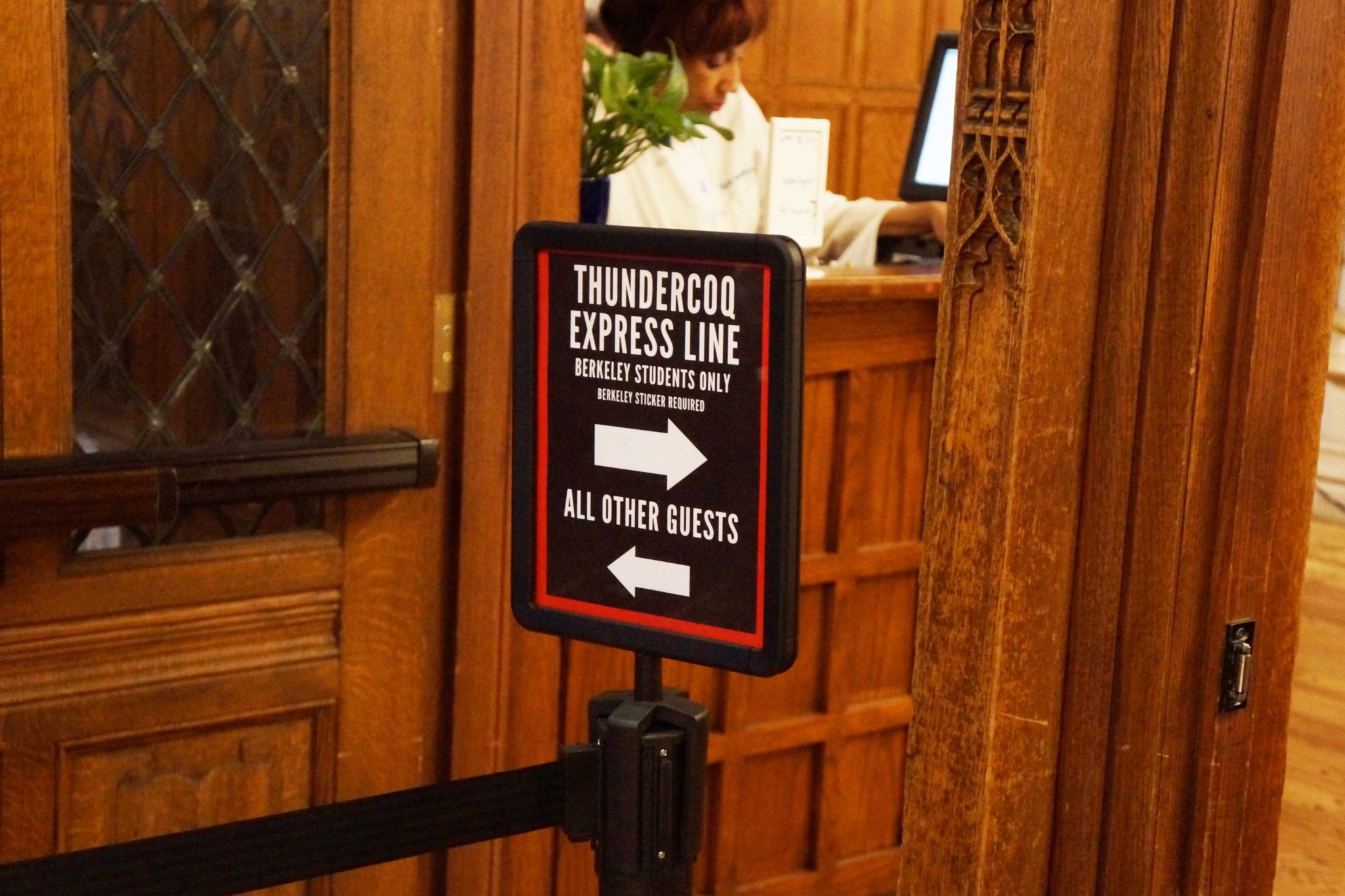
Alisia Pan
Berkeley Dining Hall’s popularity comes with disadvantages for its residents who just want a meal at home. But starting this semester, a new express line gives these Berkeley natives priority access.
Starting this semester, the college began separating Berkeley and non-Berkeley students into two different lines, the former of which moves faster and allows residents quicker access to the food. Berkeley, one of the most popular dining halls on campus, has a reputation for being one of the most crowded. According to Berkeley Head of College David Evans, the closure of Commons — a massive dining hall that served lunch to 1,100 students, faculty and staff, each day — created the overcrowding problem. Evans added that the closing of Commons before the 2017 fall semester coincided with Berkeley addition of pizza to its menu, leading to added congestion.
“It went from relatively empty to very, very full and very, very slow very quickly, and that was not very good for the dining operations,” Evans said.
Other colleges have put restrictions on transfer students in an effort to assist kitchen staff and ease the overcrowding of their dining halls. For example, Silliman maintains Silliman-only hours from 5 to 6 p.m. on Mondays through Thursdays. In previous years, Berkeley also relied on similar restrictions. Although the college considered continuing them this fall, Evans said it ultimately decided such limitations would not diminish high traffic in the servery. This issue, combined with the college’s reluctance to close Berkeley to transfers every evening, inspired the express line, Evans explained.
The response from students regarding the new express line has been mixed. Some Berkeley students, like Maude Lechner ’23, said they enjoyed the priority access to their dining hall. But others, including Cathy Geigel ’22 and Charlie Uchno ’22, said they “felt bad about using” the express line when eating in Berkeley with students from other residential colleges.
And students from other colleges, delayed at dinner, do not think the separate lines are necessary.
“It doesn’t make any sense to me because no other dining hall does it,” said Obi Nnorom ’21.
Regardless of whether students support the line or not, some guests question whether it will even solve the college’s problem of overcrowding.
It is unclear if the Berkeley express line has been successful, however. Charlie Uchno ’22, a Berkeley student, said he thinks lines are long because people are slow getting their food.
Evans said that rather than waiting in lines in the servery, dining staff, upon noticing congestion in the food area, should wait before scanning students into the dining hall.
Evans also noted that, in the case of an evacuation, the common room has more exit points than the food area, another reason to implement the express line in the common room.
Renovations to transform Commons and Memorial Hall into the Schwarzman Center were made possible through a donation from Stephen A. Schwarzman ’69.
Sharla Moody | sharla.moody@yale.edu







